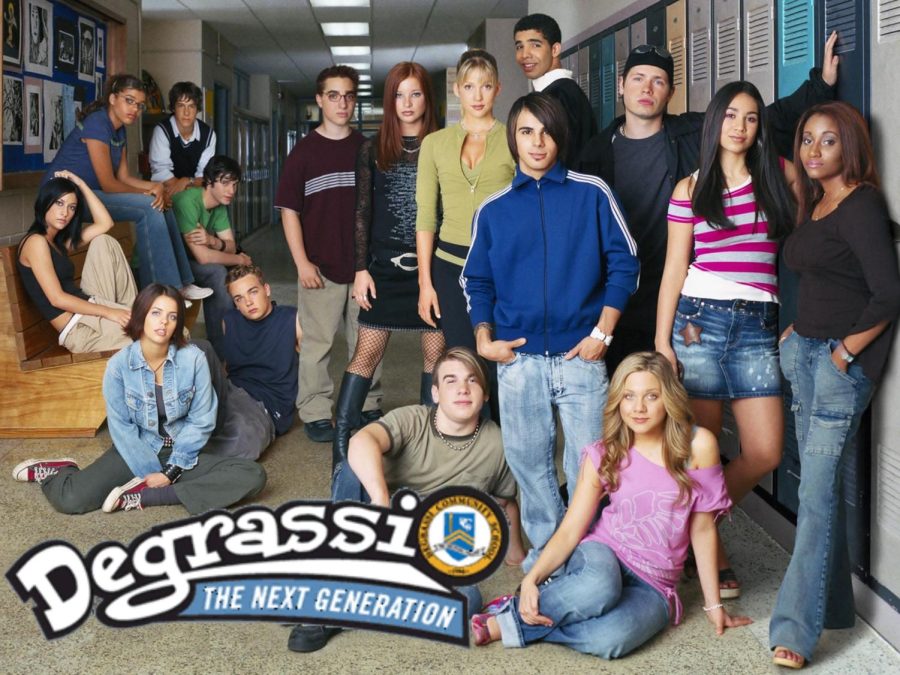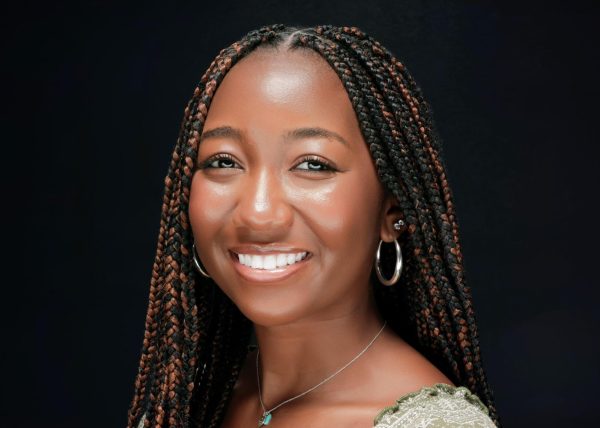The youthful uniqueness of “Degrassi: The Next Generation”
Barbara Cole/Epitome Pictures, Degrassi
During its fourteen-year tenure, the Canadian show, “Degrassi: The Next Generation” served as an integral facet in media for teens of the 2000s. Through hard-hitting storylines and tangible characters, the program provided audiences with a glimpse into the issues that young people may face and did so with accurate writing about the pubescent experience. While the show features its fair share of dramatization, the iconic nature of “Degrassi” lies within its ability to convey stories true to those of teens.
April 13, 2023
Upon a reflection on the television shows that children watched in the 2000s, several individuals may recall the infamous nature of one program in particular– “Degrassi: The Next Generation”. Premiering in 2001, the series stands as the fourth installment in the Canadian show’s lineage, following “The Kids of Degrassi Street”, “Degrassi Junior High” and “Degrassi High”. The noteworthy nature of the series arises from its willingness to tackle difficult topics in numerous, meaningful ways. From unplanned pregnancy to adolescent substance abuse, the program utilized the fictional students at Degrassi Community School to convey the real experiences of its teen viewers. While the show featured a fair share of unrealistically dramatic diatribes within its dialogue, the legacy of “Degrassi: The Next Generation” reigns as an authentic representation of the teen experience.
A common trend in teen-centered television shows lies within the ages of the actors portraying their high-school-aged characters. In TV shows of the 90s such as “Buffy the Vampire Slayer”, or televised hallmarks of the 2010s such as “Riverdale”, members of their respective main cast’s ages matched those of their real-life classmates. The titular character of Buffy, portrayed by actress Sarah Michelle Geller, began the show as a 20-year-old high school freshman; similarly, “Riverdale” showcased then 28-year-old Ashleigh Murray as a tenth grader. While programs such as “Dawson’s Creek” featured actors close in age to the characters they played, no show fairly captured the awkward, youthful essence of high school quite like “Degrassi”. In the show’s premiere season, the characters foray into puberty and first kisses in junior high, around the ages of twelve to fifteen. Fortunately, the show’s cast mirrored this. Miriam McDonald, the actress who portrayed the outspoken yet judgmental role of Emma Nelson entered the world of “Degrassi” at the age of fourteen. At the younger age of eleven, her best friend Manuela “Manny” Santos, played by Cassandra Steele, joined her at the hip. This trend feigned true amongst the rest of the adolescent cast on the show and stayed that way with the addition of other characters as the series progressed. Due to the engaging nature that the age similarities provided, the storytelling on “Degrassi” became relatable for the program’s young audience. The actors allowed the show’s content to become digestible, therefore making even the intense storylines easy for viewers to understand.
The young ages of Degrassi’s actors did not encourage the show’s writers to shy away from the topics that bumped in the night. Within its fourteen-season run, “Degrassi” tackled topics such as the isolation and insecurity that stems from racism, the crushing weight of the death of a loved one and the various ways in which mental health takes its toll on young people. In the pop culture realm, two of the show’s hardest-hitting storylines still linger in the vaster public consciousness; in the season four two-parter “Time Stands Still,” troubled student Rick Murray, portrayed by Ephraim Ellis, returns to”Degrassi” in the aftermath of his domestic abuse against his former girlfriend. After a handful of students take the bullying against Rick too far, he chooses to take out his frustration by bringing a gun to school and use it to paralyze his believed perpetrator, Jimmy Brooks, played by Aubrey “Drake” Graham. The school shooting ended with Rick succumbing to a gunshot wound, and Jimmy becoming confined to a wheelchair. While the latter remains in the majority of people’s minds, the weight of this particular plot served as a maturation in the series and showed the negative side effects of the consuming cycle of violence. The second notable storyline occurred in the season twelve two-parter, “Bitter Sweet Symphony,” and followed the depression and subsequent suicide of the character Campbell “Cam” Saunders, played by Dylan Everett. Up until that point, the season followed Campbell’s descent into the all-consuming feelings of loneliness that led Cam to his untimely end. In its harrowing aftermath, the show depicts the reactions and feelings of the remaining characters, all shacked with feelings of guilt and confusion. Throughout the remainder of the show, as well as in “Degrassi: The Next Class”, the weight of Cam’s passing lingers, notably on his former girlfriend, Maya Matlin. As candidly as possible, Degrassi captures the all-encompassing weight that suicide carries, and how those who knew the deceased, whether closely or from a distance, feel its impact ring.
Aside from the archetypal nature of the aforementioned plots, “Degrassi” produced several other episodes that delved into the growing pains of growing up. In the season two episode, “Mirror in the Bathroom,” “Degrassi” explores body image issues in the character Toby Issacs, which provided a uniquely male perspective on qualms with one’s appearance. Characters such as Imogen Moreno, Drew Torres and Fiona Coyne experience an academic stump when they become held back, and the show explores how they each navigate their uncomfortable surroundings in this position. Degrassi also explores the nuances in the ways that guilt may cause people to either succumb to their circumstances or spite them– and oftentimes, a lesson becomes learned the hard way.
“I think it’s [Degrassi] good show, especially for when it was made because not many shows in the early 2000s were addressing a lot of the topics that were discussed on ‘Degrassi’. It talks about a lot of topics that are generally seen as ‘sensitive’, but I think really addressing these topics is important, especially because the target audience seems to be teenagers,” magnet sophomore Sophia Beine said.
While “Degrassi” rightfully deserves acclaim for its ability to convey stories to teens, its criticism lies in the moments the show becomes overdramatic. Monologues in “Degrassi” may read as those of a soap opera– one that could never fathom realities like social awkwardness or a girl’s first period. In times of intensity, the show reverts to a version of events played up for entertainment purposes, and at times, causes the storylines to fall flat. Despite this however, moments like Claire Edwards’ “Did you ever love me at all?” speech or the iconic montage of Manny’s blue thong do not outnumber the importance of the majority of Degrassi’s storylines. The nature of the show allows both its seriousness and its flair to coexist, and fans everywhere feel both their lasting impacts.
In short, “Degrassi: The Next Generation” stands as a pivotal aspect of teenage media. Through hard-hitting stories and memorable characters, this gem of television deserves to remain in the consciousness of every single viewer.
“‘Degrassi’ has some plot lines they try to address–like addiction, self harm, eating disorders, teen pregnancy and other sensitive topics–they cycle through [things] that other shows about high school don’t address. Those are such serious topics that I think should be addressed by TV shows while not being glorified, which ‘Degrassi’ does a good job of. I think the show brings awareness to more serious topics other shows are afraid to address and teens can appreciate that. While experiences are exaggerated for the sake of entertainment, teens can find some relatability to characters in ‘Degrassi’ they can’t find in other shows,” magnet junior Lily Stooksbury said.







